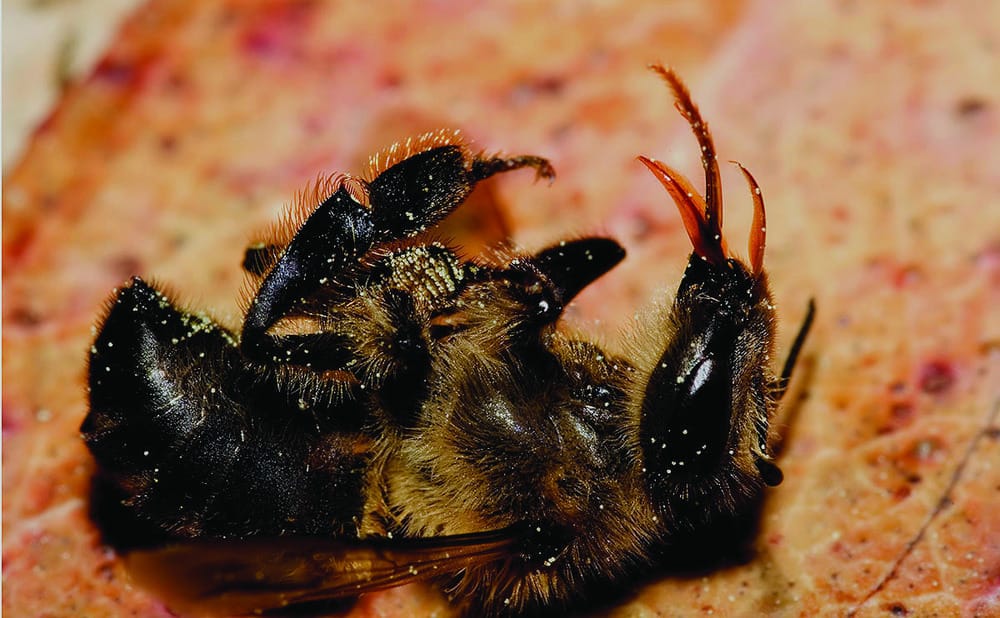The chaos of colony collapse disorder
Laurence Pope on recent research into the humble honeybee

The modern-day bee is in a bit of a sticky situation, and we’re not talking about honey.
It was published in PLoS One last week that scientists discovered a mass-extinction of one bee group, Xylocopinae, at around the same time the dinosaurs punched out of the biological timeline. This extinction is believed to be linked to the extinction of many flowering plant species. Speed forward 65 million years or so and we’ve got another bee problem: colony collapse disorder (CCD).
You could write a dissertation on colony collapse disorder (and indeed I actually have), but it can be boiled down to a few simple facts. Back in late 2006 US beekeepers noticed that their hives were devoid of large numbers of worker bees, even dead ones. The bees had seemingly vanished. Over six years on and it’s still a problem across a lot of the world, including the US, Europe and parts of Asia. Bee populations are crashing, and no-one’s quite sure why.
Several competing hypotheses have been put forward. Some blame a group of pesticides known as neonicotinoids, a class of neuroactive agents introduced in the early 1990s. Neonicotinoids have low toxicity in mammals, and at the time seemed a good alternative to more toxic pesticides being used. And although they’re quite good at killing pests they’re apparently also quite good at disrupting the bee’s in-built navigation system. The EU recently imposed a ban, although the jury’s still out amongst scientists whether or not neonicotinoids are a major culprit in CCD.
Other blame the aptly named Varroa destructor, a parasitic mite that attaches to bees and inadvertently spreads viruses to its host, weakening the bee’s immune system. Even more factors have been brought into question, including the monoculture nature of farming, climate change, other pathogens and malnutrition. No single factor has been conclusively singled out as the major causative agent of CCD, but like many complex ecological phenomena CCD is likely the outcome of a mixture of these issues. There will be no silver bullet.
The consequences of CCD extend far beyond a potential shortage of honey and pretty flowers. Bees contribute billions to the economy via their ability to pollinate crops. Without them the pollination of many crops would need to occur by hand, an expensive and time-consuming process that would very likely impact overall crop yield.
And so research continues. For the sake of both the human race and the beleaguered bee one hopes solutions will soon be found.









